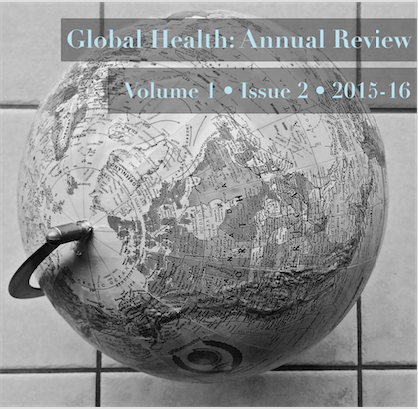Inching towards a Federal Pharmaceutical Plan in Canada: Application of Multiple Streams Theory and Punctuated Equilibrium Theory
Résumé
The lack of a national pharmacare strategy in Canada is a pressing health policy issue. Current provincial drug plans are not designed to equitably cover chronic conditions such as diabetes and hypertension. Universal pharmacare has cost-saving implications. A recent report by the Canadian Institute for HEalth Information showed that Canadians spent $28.8 billion on prescription drugs. The objective of this paper is to apply Kingdon’s multiple streams theory in the analysis of the lack of a national pharmaceutical strategy. Baumgartner and Jones’ theory of punctuated equilibrium is applied to explain why, despite the momentum building in Canada, there has been stasis in the creation of a national pharmaceutical plan. The paper concludes with a set of necessary and sufficient conditions that provide a context for successful implementation of a national pharmaceutical policyRéférences
Marchildon GP. Health Systems in Transition. Health. 2013;15(1):1-179.
Morgan S., Martin, D., Gagnon, M., Mintz, B., Daw, J. et al. Pharmacare 2020: The future of drug coverage in Canada. Vancouver Pharmaceutical Policy Research Collaboration: University of British Columbia, 2015.
Ministry of Health and Long-term Care. The Ontario Drug Benefit Program. Toronto, Ontario. Accessed: [2016 April 14, 2016]. Available from: http://www.health.gov.on.ca/en/public/programs/drugs/programs/odb/odb.aspx.
Kozyrskyj AL, Mustard CA, Cheang MS, Simons F. Income-based drug benefit policy: impact on receipt of inhaled corticosteroid prescriptions by Manitoba children with asthma. Canadian Medical Association Journal. 2001;165(7):897-902.
Kirby, J. Why 2016 is shaping up to be a bad year for Canada’s banks. Macleans Magazine. 2016.
Canadian Institute for Health Information. National Health Expenditure Trends, 1975-2015. Toronto: Canadian Institute for Health Information, 2015.
Morgan SG, Law M, Daw JR, Abraham L, Martin D. Estimated cost of universal public coverage of prescription drugs in Canada. Canadian Medical Association Journal. 2015.
Daw JR, Morgan SG. Stitching the gaps in the Canadian public drug coverage patchwork? A review of provincial pharmacare policy changes from 2000 to 2010. Health Policy. 2012;104(1):19-26.
Kingdon JW, Agendas A. Public Policies. Boston: Little, Brown; 1984.
Gagnon, M. A roadmap to a rational pharmacare policy in Canada. Ottawa: Canadian Federation of Nurses Unions. 2014.
Howlet M, Ramesh, M., Perl A. Studying Public Policy - Policy Cycles & Policy Subsystems. Canada: Oxford University Press; 2009.
Canadian Agency for Drugs and Technologies in Health. CADTH- Who we are 2016. Available from: https://www.cadth.ca/about-cadth/who-we-are.
Romanow RJ. Building on values: The future of health care in Canada. Final report, Commission on the Future of Health Care in Canada. 2002.
Burgmann, T. Health ministers to work together on affordable drugs, community care. Online news from Canadian Press. 2016.
Wynne, K. Mandate letter progress: Health and Long-Term Care. Government. Toronto, Ontario: Government of Ontario; 2016.
Romanow, R., Marchildon, G. The time has come for universal pharmacare. The Toronto Star. 2015;Sect. Opinion/ Commentary.
Howlett M, McConnell A, Perl A. Reconciling Streams and Stages: Avoiding Mixed Metaphors in the Characterization of Policy Processes. InAPSA 2013 Annual Meeting Paper; 2013.
Boothe K. Timing health policy development and change: The drug gap.; 2011.
The College of Family Physicians of Canada. The Role of the Federal Government in Health Care; 2013. Available at: < http://www.cfpc.ca/uploadedFiles/Health_Policy/_PDFs/FG_HC_Report_Card.pdf>
Angus Reid Institute. Prescription Drug Affordability an issue for nearly a quarter of all Canadian households.; 2015.
Baumgartner FR, Jones BD. Agenda Dynamics and Policy Subsystems. The Journal of Politics. 1991;53(04):1044-74.
Herder M. It's time to think beyond national pharmacare. Toronto Star; 2016 February 8. [cited 2016 April 20]. Available from:
Boyle T. National pharmacare program could save $7.3 billion. Toronto Star; 2016, March 16.
[cited 2016 April 20]. Available from:
Bégin HM, Eggertson L, Macdonald N. A country of perpetual pilot projects. Canadian Medical Association Journal. 2009;180(12):1185-.


